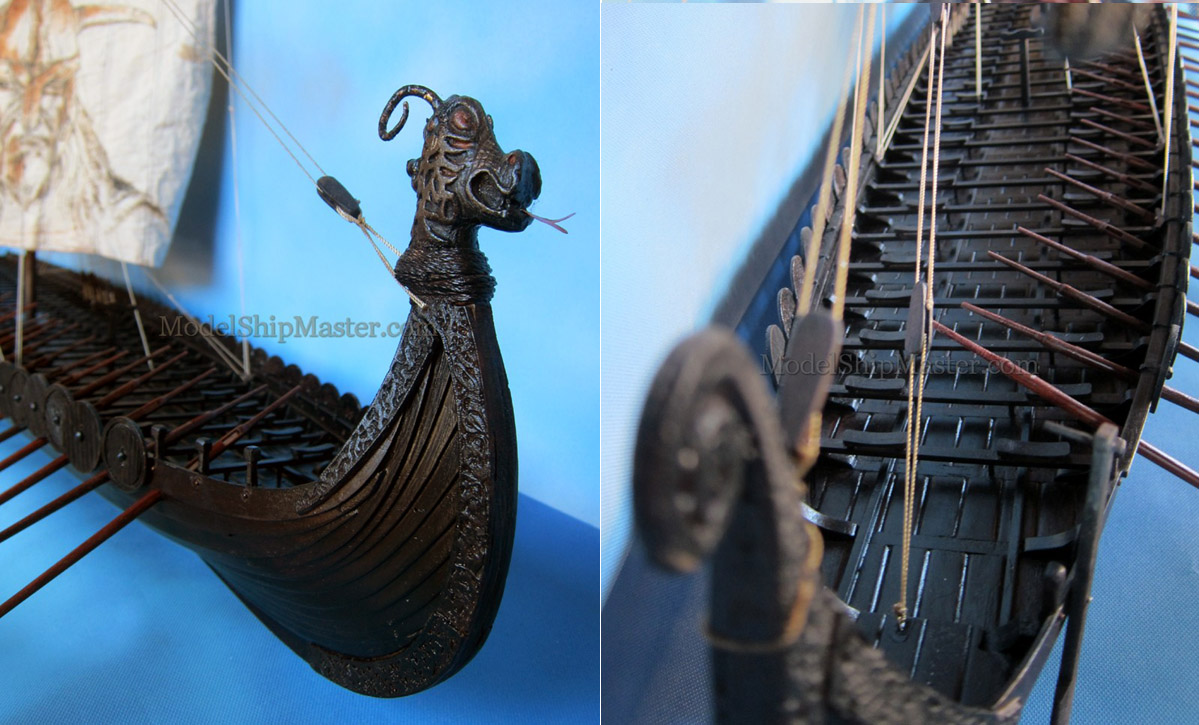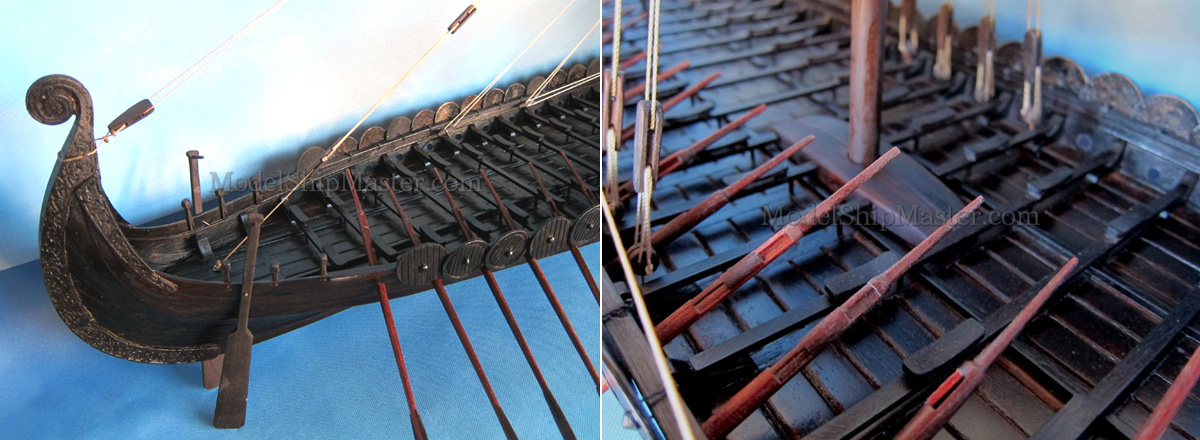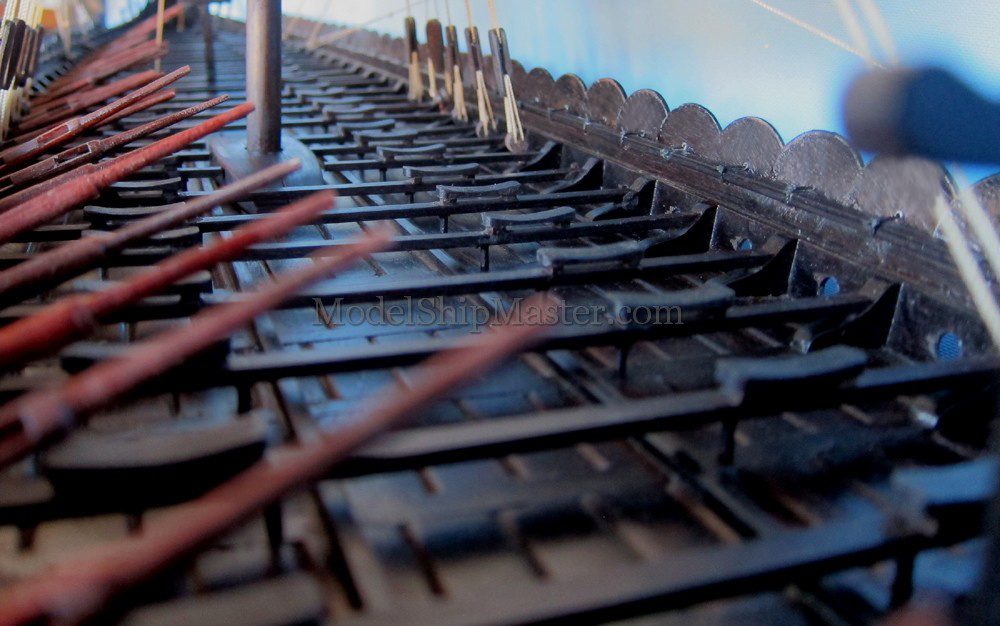|


256-bit encryption
$500,000 protection

|
VIKING LONGSHIP model
.jpg)
Viking Longships
were the most powerful ships in the
Viking fleet and appeared only in the biggest wars. They carried up to four hundred fearless
Viking warriors on their raids across Europe over a
millennium ago.
With their snarling ships and hundreds of sword
wielding warriors, the Vikings created a sight that
brought terror into the hearts of people across Europe,
North Africa and western Asia.
Viking longships
were constructed using the clinker design,
meaning that each hull plank overlapped the next.
They were
very sturdy, and yet flexible enough to withstand the
waves of stormy seas.
The planks were riven (radially
hewn) so that the grain is approximately at right angles
to the surface of the plank. This provides maximum
strength, an even bend and an even rate of expansion and
contraction in water. This is called in modern terms
quartersawn timber, and has the least natural shrinkage
of any cut section of wood.

The first Viking longships
can trace their origin back to between 500 and 300 BC,
when the Danish Hjortspring boat was built. The planks
were fastened with cord, not nailed. The ships were
paddled, not rowed. In the late eighth century, the
Kvalsund ship was built. It was the first with a true
keel. Its cross sectional shape was flatter on the
bottom with less flare to the topsides. This shape is
far more stable and able to handle rougher seas. It had
the high prow of the later longships. After several
centuries of evolution, the fully developed Viking
longship emerged some time in the middle of the ninth
century. Its long, graceful, menacing head figure carved
in the stern echoed the designs of its predecessors. The
mast was now square in section and located toward the
middle of the ship, and could be lowered and raised. The
ships were large enough to carry cargo and passengers on
long ocean voyages, but still maintained speed and
agility, making the longship a versatile warship and
cargo carrier.

The
Viking
longships were
characterized as graceful, long (frequently with a
length-breadth ratio of 7:1), narrow, and light, with a
shallow-draft hull designed for speed. The ship's
shallow draft allowed navigation in waters only one
meter deep and permitted arbitrary beach landings, while
its light weight enabled it to be carried over portages
or used bottom-up for shelter in camps. The true Viking
warships, or langskips, were long and narrow. They were
very fast
twelve
knots under sail or
propelled by warriors who served as oarsmen.
The
tapered bows and sterns enabled sailors to row their
Viking longship forwards and backwards without first having to
turn the ships around.
The Vikings were major
contributors to the shipbuilding technology of their
day. Their shipbuilding methods spread through extensive
contact with other cultures, and ships from the 11th and
12th centuries are known to borrow many of the longships'
design features, despite the passing of many centuries.

This Viking longship model is 55"
long x 23" tall x 13" wide. Note that both
sides of the ship have oars.
$7,500
 Shipping
and insurance in USA included. Other countries: $800
flat rate. This model is in stock and can be shipped
within 5 business days. Shipping
and insurance in USA included. Other countries: $800
flat rate. This model is in stock and can be shipped
within 5 business days.
This page
is about the Viking Longship. For a different
Viking ship, click
here.
Our accurate Viking ship models are
featured permanently in the Maritime Museum of San Diego and Department of
Archaeology, Flinders University.

Learn more
about the Viking longship here:
https://en.wikipedia.org/wiki/Longship
|